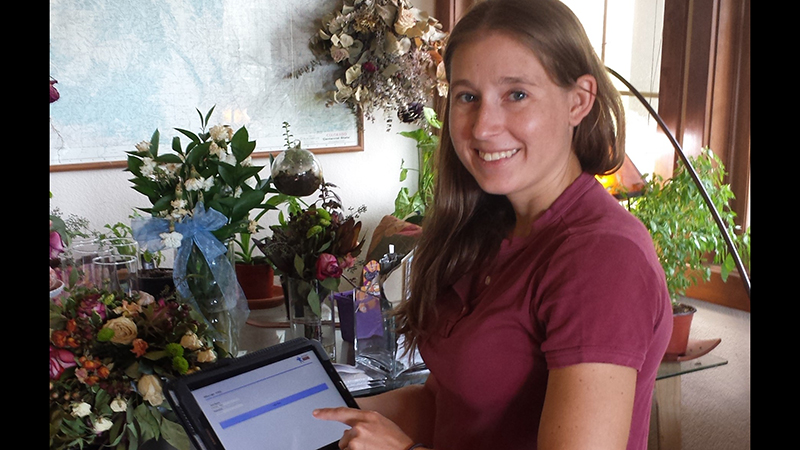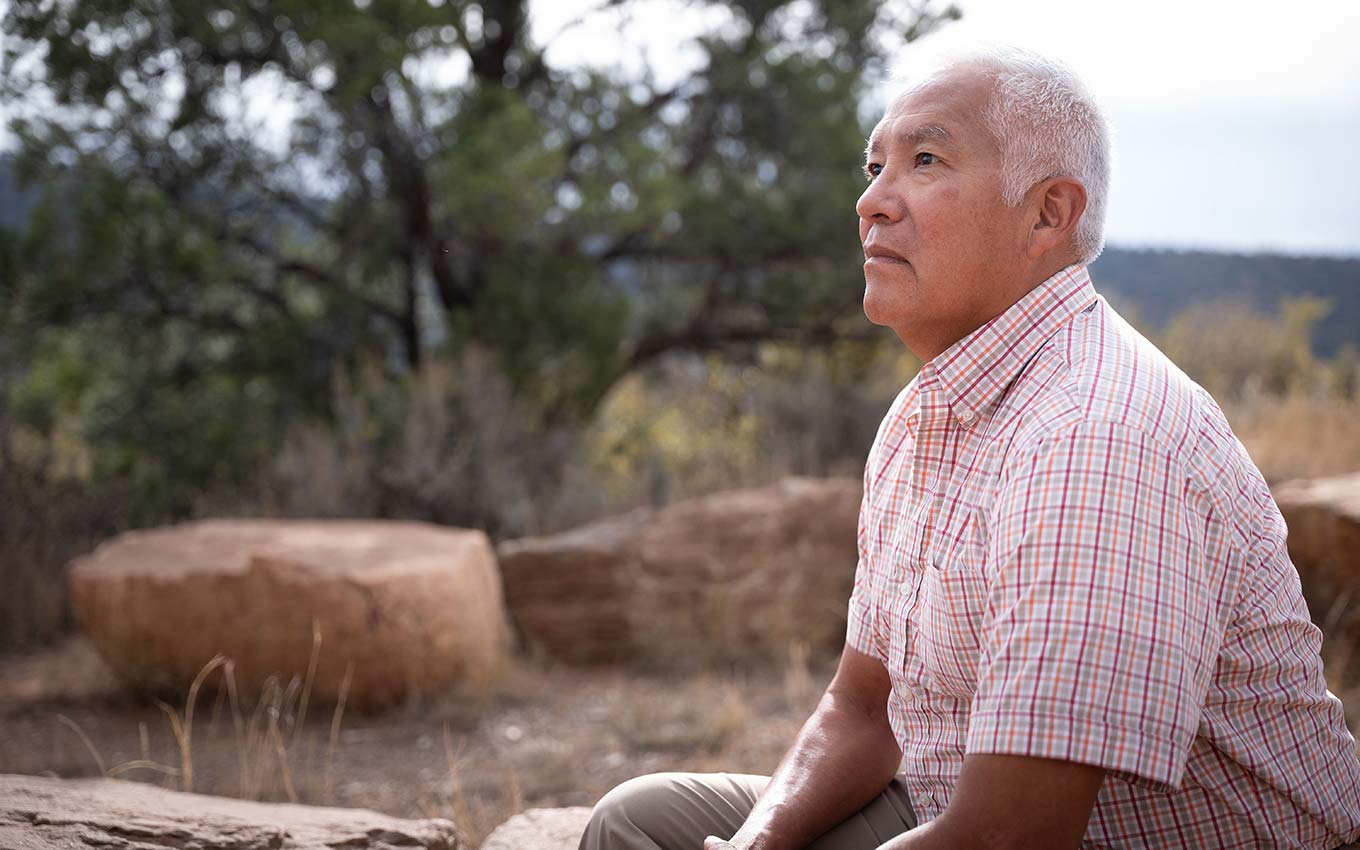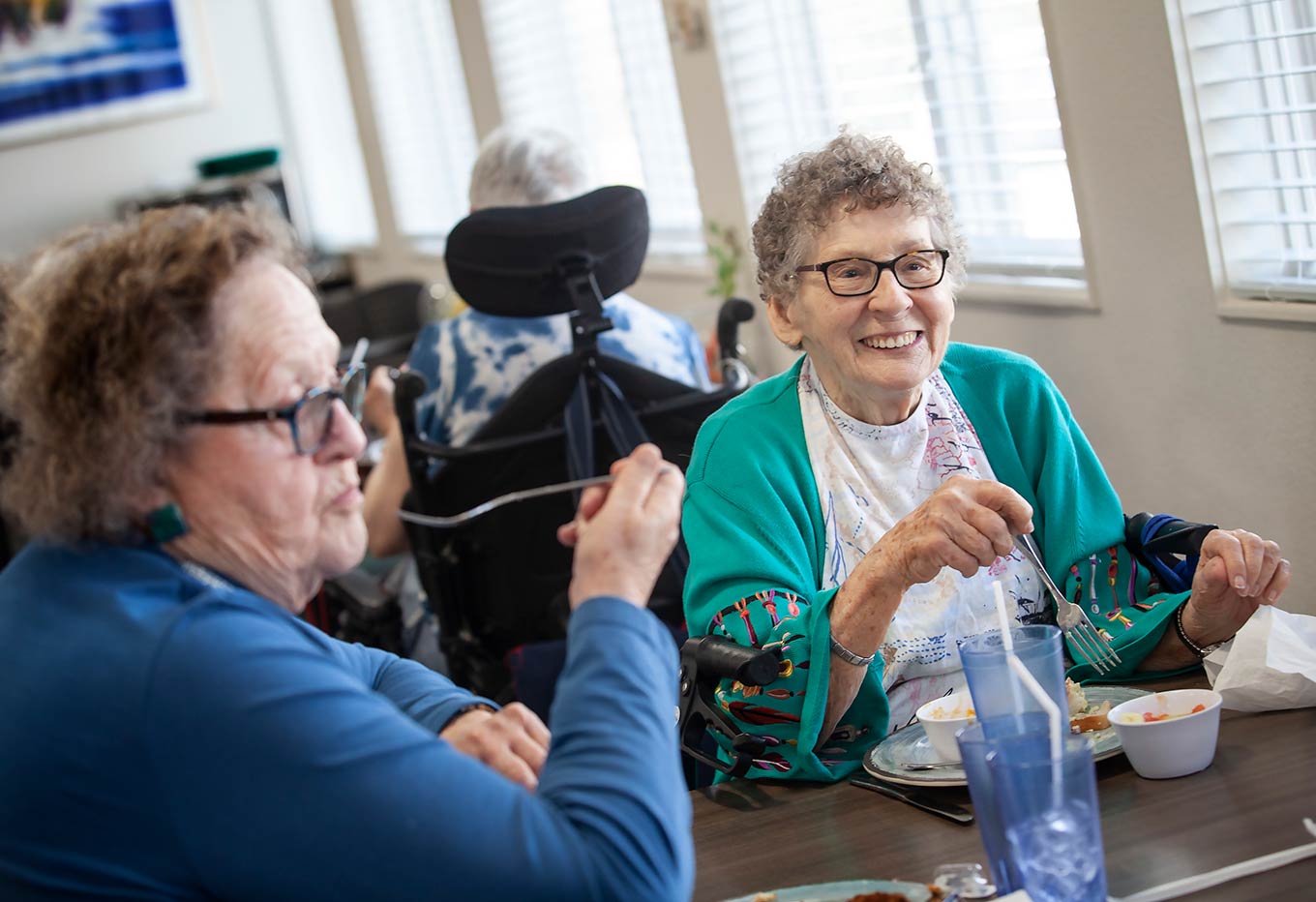When Little Sprouts Learning Center opened in Granby, Colorado, four years ago, director Jessica Driver noticed that most parents tended to count on their pediatricians to monitor whether their children’s development was on track for their age.
Families “felt like that was probably enough,” Driver said. But physicians, she said, typically spend “15 or 20 minutes with a kid and they are not immediately seeing a delay.” Other families might attend a developmental screening event at a local elementary school, but those services tend to attract families with incoming kindergartners and were “completely missing that zero-to-5 age group,” she said.
Those are some of the reasons why Grand Beginnings, a Grand County nonprofit early-childhood coalition (and a former Trust grantee and award winner), launched its Meeting Milestones Initiative—an effort to increase families’ use of a widely used screening instrument with the help of technology and the participation of multiple community partners.
The organization worked with a Littleton-based company, Patient Tools, to create an app based on the Ages and Stages Questionnaire (ASQ-3)—actually a series of 21 questionnaires—that alert parents to any missed developmental milestones, such as taking first steps or waving goodbye, between their newborn’s early months and when the child turns 5 and a half years. The screening app is currently available in English, Spanish and Somali, and there are plans to translate it into additional languages, said Katy Lois, health systems coordinator at Grand Beginnings.
“We’re normalizing that screening is just something you do when you have a young child in your family,” Lois said.
An “accurate, cost-effective” tool
Under the Individuals with Disabilities Education Act, states are required to provide early intervention services for children under age 3 that are identified with disabilities, and school districts provide special education services for preschoolers.
ASQ-3 is one of multiple screening tools available. A 2017 paper by researchers at Eastern New Mexico University and East Carolina University called ASQ-3 “accurate, cost-effective, parent-friendly instruction for screening and monitoring of preschool children.” They noted that it has also been recommended for use in detecting autism and conducting follow-up assessments of premature infants and others at risk.
But screening rates vary widely from state to state, and nationally, only about 30% of children were screened between 9 months and 35 months, according to a paper appearing last fall in the Journal of the American Medical Association.
Efforts to increase screening rates are spreading across the country as a way to address developmental problems as early as possible and ideally prevent children from requiring ongoing, expensive special education services in school. The U.S. Department of Education’s Birth to 5: Watch Me Thrive! effort and the Centers for Disease Control and Prevention’s Learn the Signs. Act Early campaign, which also features a milestone tracking app, are a few examples.
Two years ago, Canadian researchers Scott Veldhuizen and John Cairney pointed to the potential that technology has to improve the development screening process. Virtual reality and videos of young children captured on smartphones are two examples they noted in a paper. But they added that there could be privacy concerns and that such approaches should still be part of a “responsible and coherent assessment protocol.”
They wrote: “The methods we use today, which rely mostly on text and on assessor judgment, are in no danger of obsolescence, but they use only some of the information that is available.”
A sharp increase in ASQ-3 screenings
The overall screening rate in Colorado—50.2%, according to a study of 2016 data—is significantly higher than the national average of 30.4%. But children in rural areas are often less likely to be screened, simply because there are fewer opportunities, said Driver. When Grand Beginnings took a baseline measure, they determined that only 34% of young children in the county were being screened.
Traditionally, professionals (including pediatricians, home visitors, early-childhood education providers and staff members in other community-based organizations) give ASQ-3 forms to parents to complete or give them access to an online version of the tool. Parents answer the questions about what their child can do, the providers then score the questionnaire, and ideally refer parents for more evaluation or intervention if needed.
“We’ve learned that parents are really wonderful assessors of their children,” said Jane Squires, a professor of early intervention and special education at the University of Oregon and one of the developers of ASQ-3. “It’s reassuring and empowering for them.”
Still, roughly two-thirds of Grand County’s young children were being missed with the traditional approach. Too often parents that are told their child needs a follow-up evaluation “don’t understand what the next step is,” said Squires.
In addition, the potential for human error, such as using a screening tool for the wrong month of age or entering an incorrect score, was greater under the existing system. The app cuts down on human error and improves on the traditional process by referring families to local providers in their area if further follow-up is recommended.
But the “flashy technology,” as Lois calls it, is just one piece of how the Meeting Milestones Initiative has changed the screening process, first in Grand County and then in adjacent Jackson County. The collaboration that went into creating a community-wide roadmap of services and providers is what has led to a significant leap in screening rates in Grand County.
Beginning in 2010, health care professionals, early-childhood and child care providers, parents, therapists and other community members worked together “to envision a system where kids are not really falling through the cracks,” Lois said. Grand Beginnings received support for the effort with health integration funding from The Trust.
Since the development and promotion of the app, screening rates have climbed to at least 79%, Lois said. The screening is now conducted on an iPad or other tablet computer at pediatricians’ offices, in early-childhood centers and in other programs working with families that have young children.
At Driver’s center, which serves infants, toddlers and preschoolers, lead teachers conduct the screenings with families annually or more often if they get a “watch and wait” signal for a particular area of development. Because families can receive free early intervention services if an issue is identified, often “after a year or two, you would never know the child had a delay,” Driver said.
With four children—ranging in age from 10 months to 10 years—Granby resident Debbie Relyea has celebrated first steps, first words and plenty of other key early moments. But she’s never relied solely on her intuition as a mom to gauge whether her children have progressed as they should; she has participated in screenings at well-child check-ups and at her children’s child care programs.
“It was nice to know my children were developing at the pace they should be,” Relyea said. “It was reassuring to know if there was a problem we would be able to help our child immediately.”
Data sharing important for collaboration
While the milestones app has been customized for Grand and Jackson counties, there is the potential for any community to “sit down and create their own roadmap,” said Lois, stressing that the links to local providers is the key to increasing screening rates.
Alan Malik, the founder and president of Patient Tools, said efforts to implement the app are spreading to Routt County, west of Jackson and Grand counties, as well as to some counties in Minnesota and with the Minnesota Department of Health.
The potential also exists for providers to give families access to the app to conduct screenings at home. “It’s a tool in our toolkit,” Lois said, but adds that there is not yet a need for that step because response to conducting the screenings in person with a provider has been so great.
Providers report that now, when families come in for doctors’ visits, they are already asking to complete the screening. “That’s a small thing,” Lois said, “but big.”



